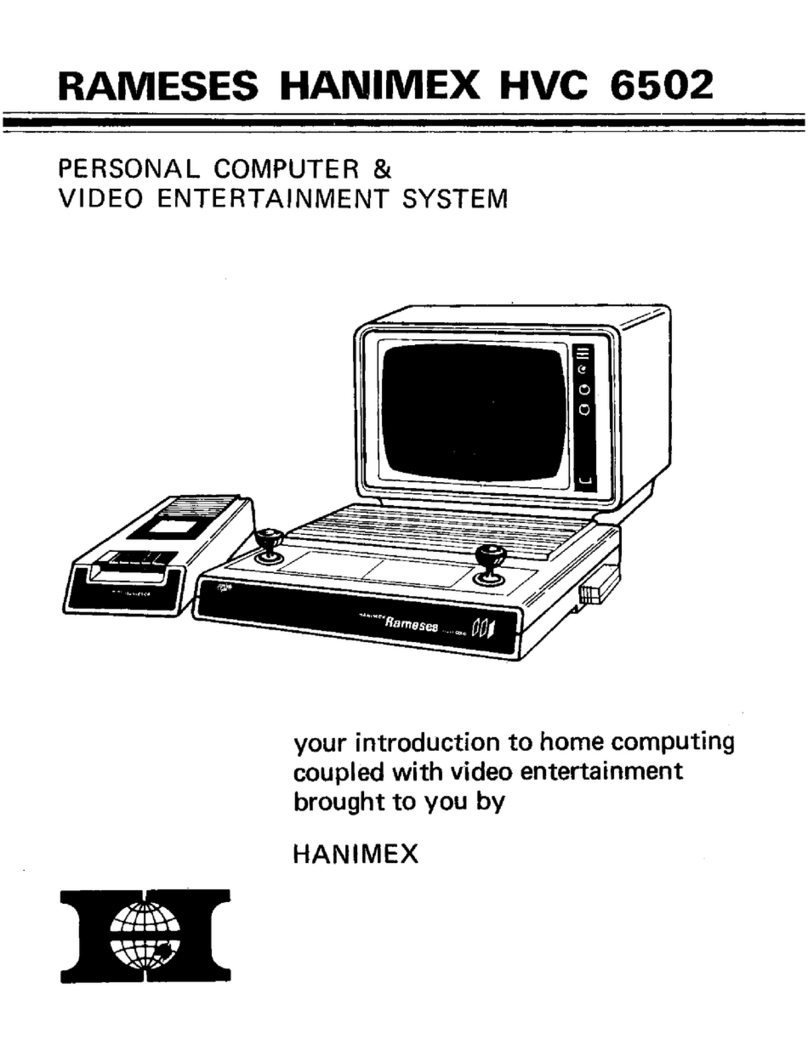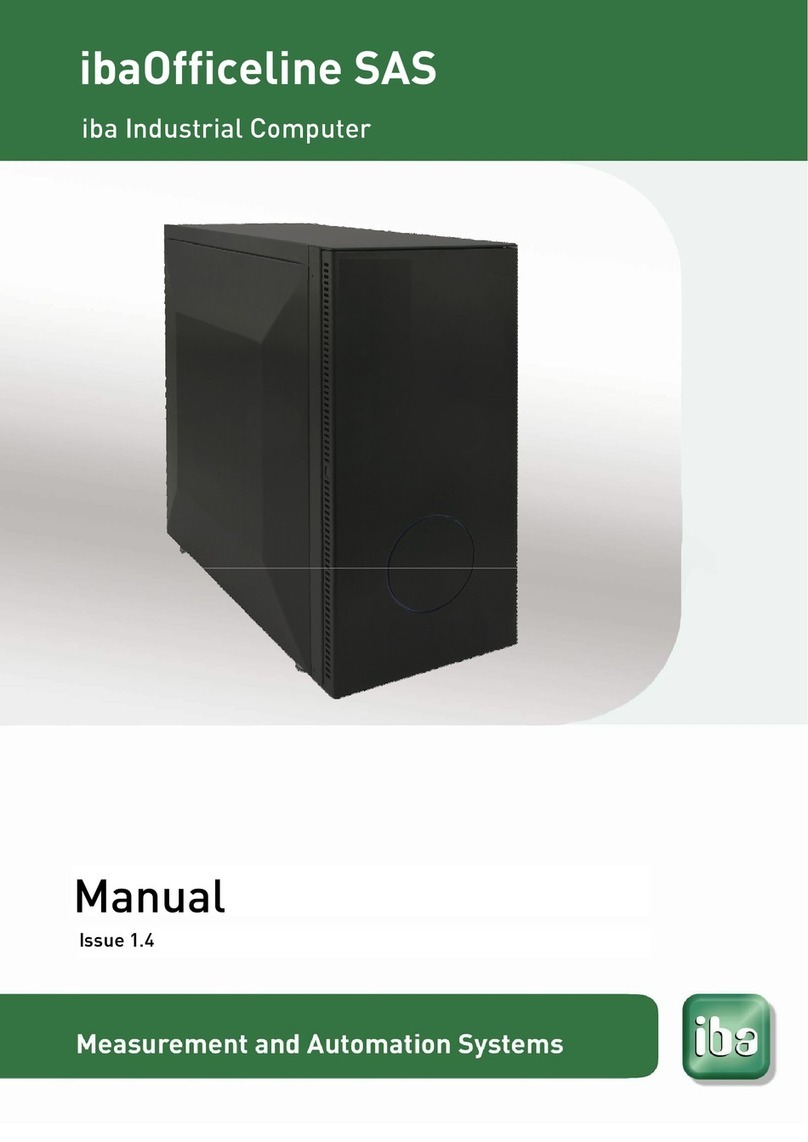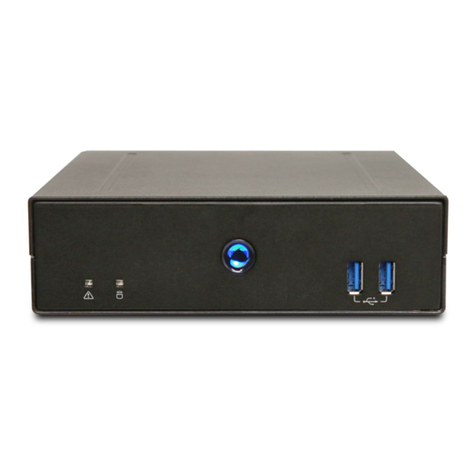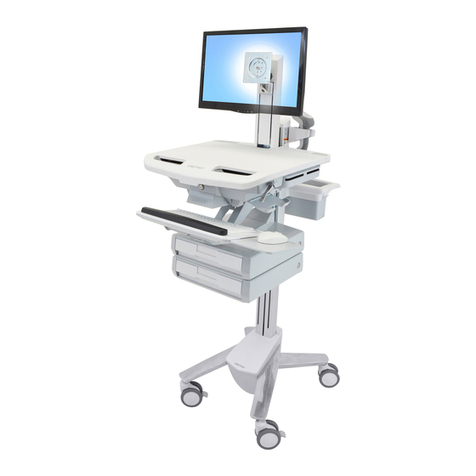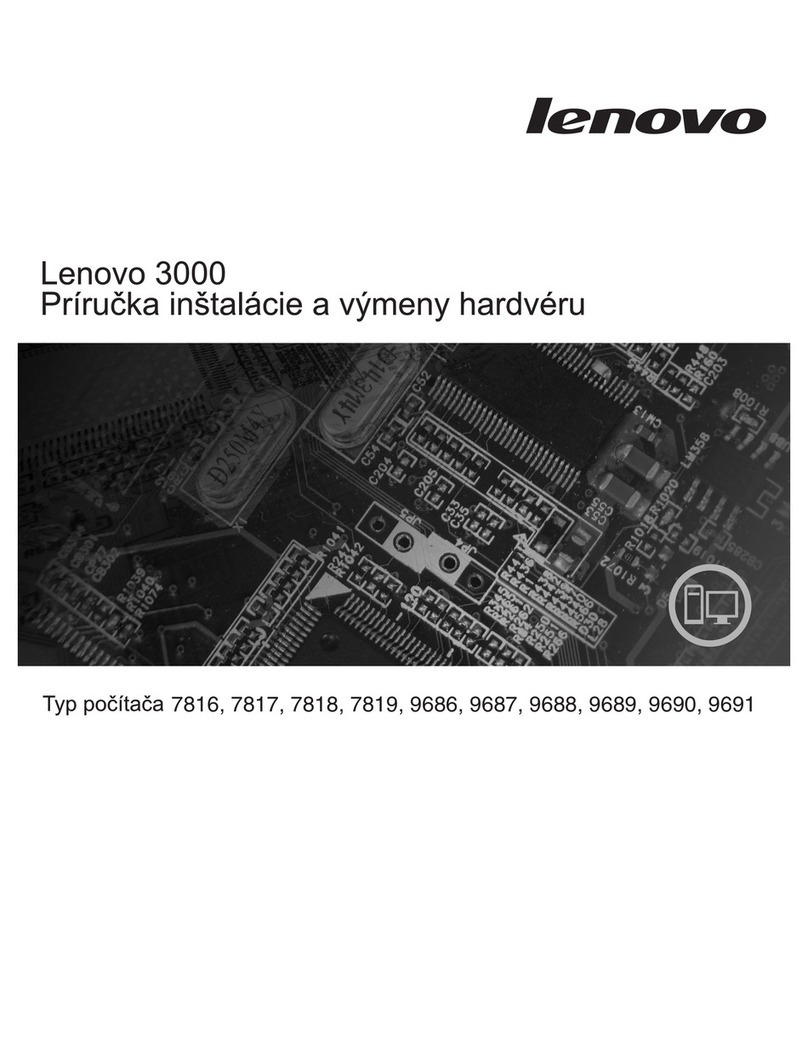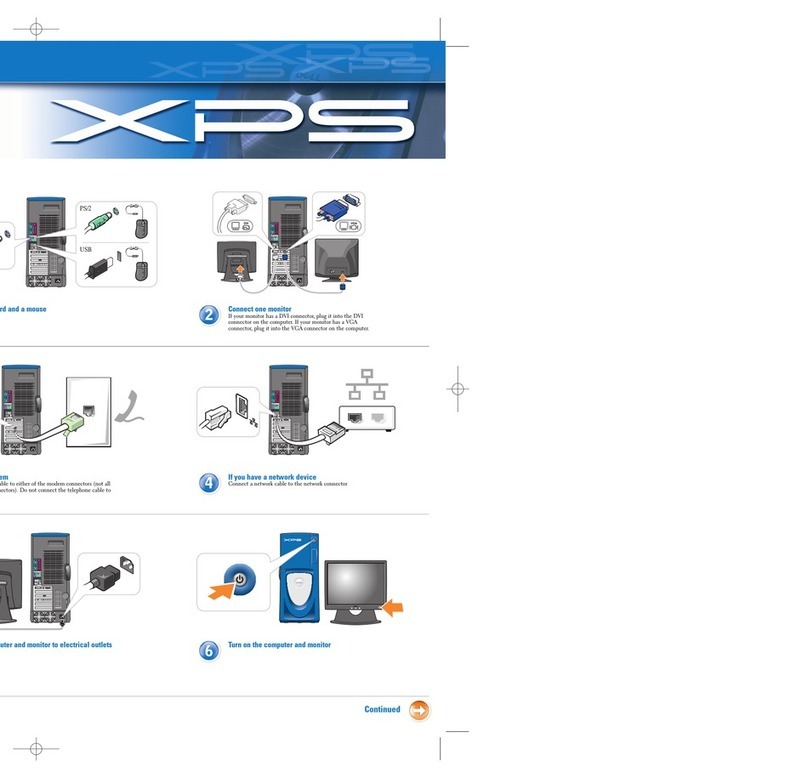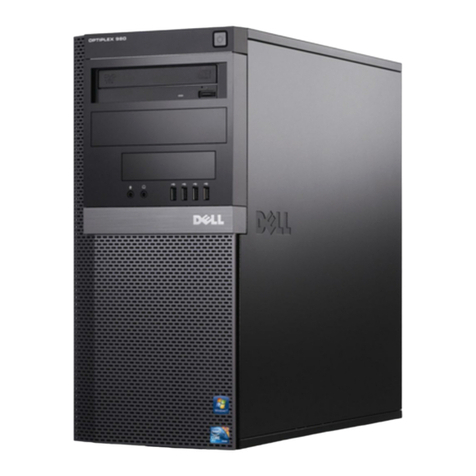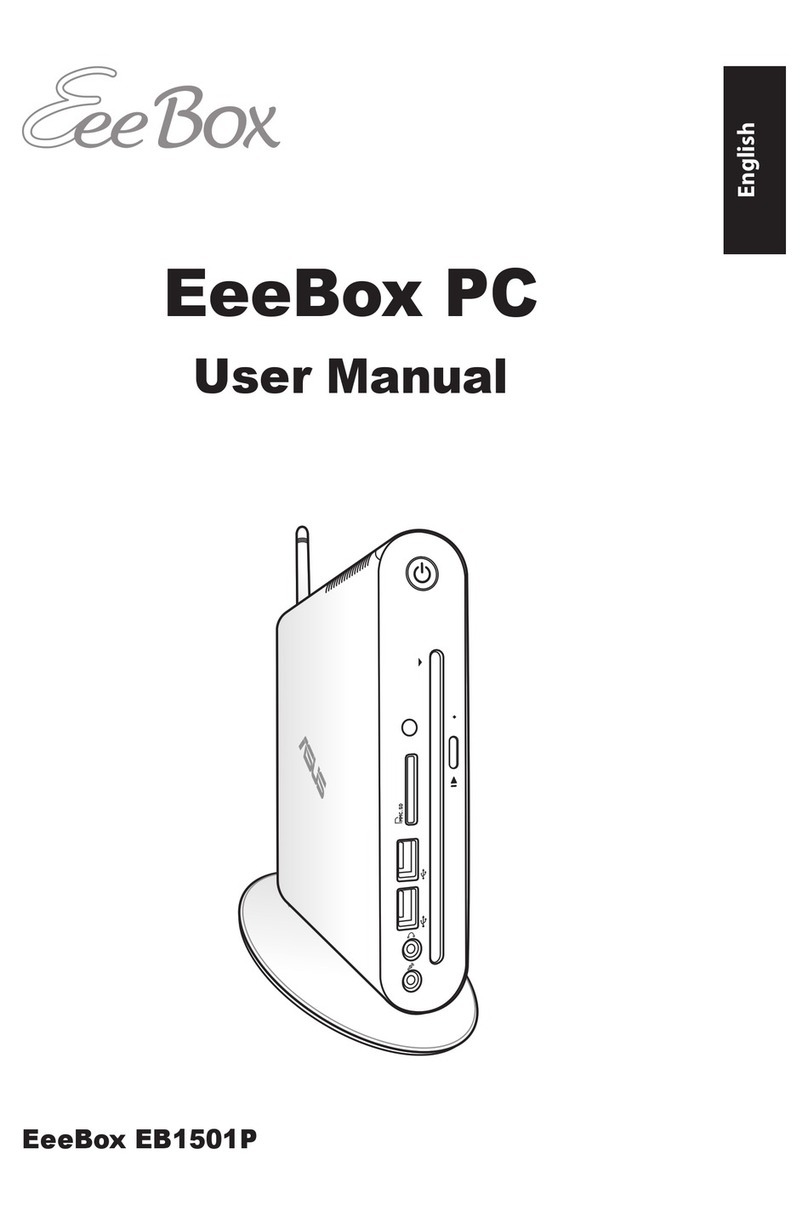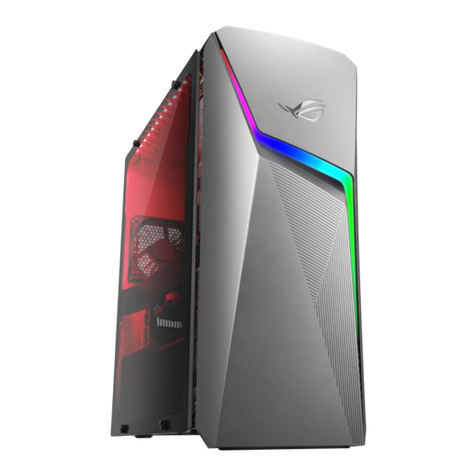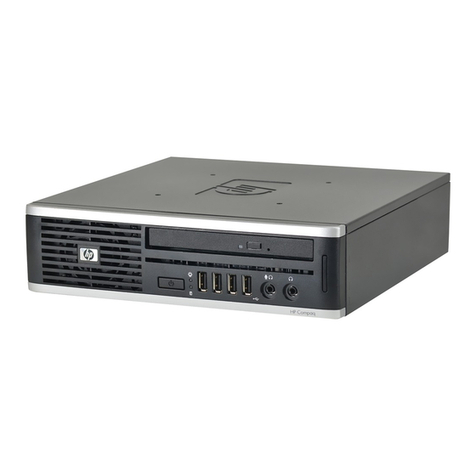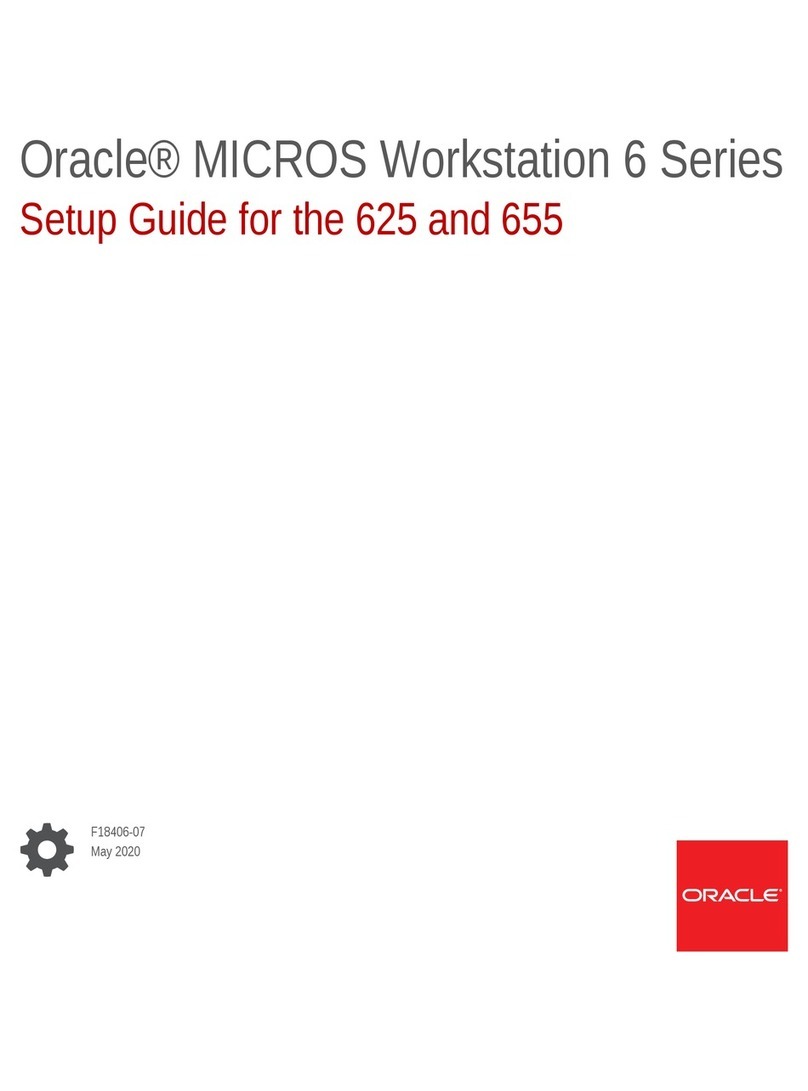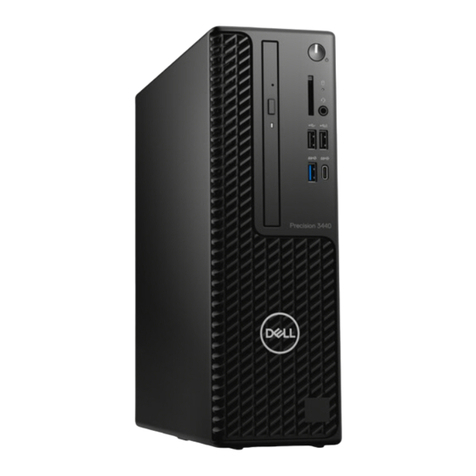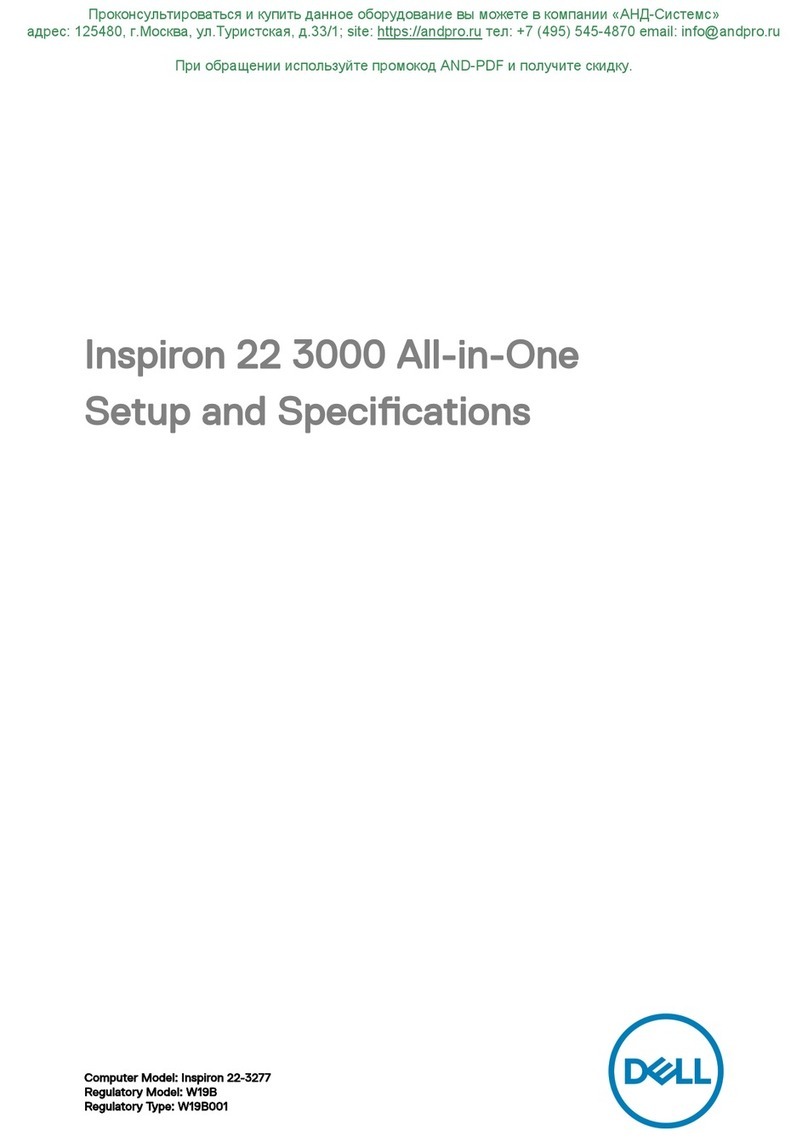Hanimex HVC 6502 User manual

RAMESES
HAIMIMEX
HVC
6502
PERSONAL
COMPUTER
&
VIDEO
ENTERTAINMENT
SYSTEM
your
introduction
to
home
computing
coupled
with
video
entertainment
brought
to
you
by
HANIMEX

CONTENTS
1
INTRODUCING
RAMESES.
2
MAIN
CONSOLE
OPERATING
INSTRUCTIONS:
A
CONNECTING
THE
AERIAL
SWITCH
BOX
AND
BALUN;
B
STEPS
TO
SET
UP
FOR
A
GAME;
C
THE
RESET
BUTTON;
D
HOW
TO
USE
HAND
CONTROLS;
E
PRECAUTIONS;
F
TO
SWITCH
YOUR
TELEVISION
SET
BACK
TO
NORMAL
USE;
G
SUMMARY
OF
SET-UP
PROCEDURES.
3
GAMES
&
COMPUTING
CARTRIDGES.
4
INTRODUCTION
TO
RAMESES
HOME
COMPUTING.
5
ABOUT
THOSE
WORDS!
6
WHAT
IS
A
COMPUTER?
7
HOW
DOES
THE
COMPUTER
WORK?
8
WHAT
IS
A
C.P.U.?
9
WHY
IS
IT
CALLED
A
DIGITAL
COMPUTER?
10
BITS
AND
BYTES.
11
OUTPUT
DEVICES.
12
COLOUR.
13
SOUND.
14
A
VERY
LITTLE
BIT
ABOUT
PROGRAMMING.
APPENDIX
#1:
CHARACTERS
AND
CODES
APPENDIX
#2:
NUMBERING
SYSTEMS
APPENDIX
#3:
BRIEF
DESCRIPTION
OF
COMPUTER
LANGUAGES
EPILOGUE

1
INTRODUCING
RAMESES®
Congratulations
on
purchasing
a
RAMESES
Home
Computer
and
Video
Entertainment
console.
Let
us
tell
you
a
little
more
about
RAMESES
before
you
read
the
rest
of
this
book
and
set
the
console
up,
and
start
to
get
some
video
entertainment
from
it.
RAMESES
console
is
part
of
a
computing
system.
It
combines
the
functions
of
a
Central
Processing
Unit
with
memories
and
a
keyboard,
and
has
input
and
output
ports
to
enable
connection
of
peripherals
that
add
to
its
overall
flexibility
and
entertainment
facility.
(Incidentally,
if
we
use
a
few
words
that
are
new
to
you,
don’t
worry,
they
are
explained
later!)
RAMESES
peripherals
(which
enable
expansion
to
a
complete
computing
system)
are
listed
out
in
later
parts
of
this
book.
We
have
tried
to
make
this
book
as
simple
to
follow
as
possible
in
the
setting
up
of
the
unit
and
connecting
it
to
your
TV
set
Follow
the
instruction
book
carefully
and
read
the
ancillary
instruction
manuals
that
are
issued
with
each
games
cartridge.
The
game
supplied
with
RAMESES
has
its
own
instruction
book
just
as
do
the
other
games
cartridges.
Similarly,
when
the
peripherals
are
added
to
your
overall
computing
and
entertainment
facility,
detailed
books,
including
those
about
use
of
the
RAMESES
console
as
a
computer
and
utilizing
the
BASIC
programming
language,
are
available
as
you
need
them.
This
booklet
tells
you
more
about
these
things
later
on.
Now
let's
get
the
console
going:—

2
MAIN
CONSOLE
-
OPERATING
INSTRUCTIONS
A
Connecting
the
aerial
switch
box
and
balun
The
aerial
switch
box
provides
you
with
a
convenient
means
of
using
youi
television
set
for
normal
TV
programmes,
or
for
using
your
RAMESES.
•
Remove
the
co-axial
cable
from
your
television
set
and
connect
to
the
switch
box.
•
Connect
the
co-axial
cable
from
the
switch
box
to
the
aerial
socket
of
your
television
set.
•
Connect
the
co-axial
cable
from
RAMESES
console
to
the
switch
box.

AERIAL
CABLE
B
Steps
to
set
up
for
a
game
1
Make
sure
that
RAMESES
power
switch
if
"OFF".
2
Connect
the
AC
adaptor
power
plug
to
RAMESES
power
socket.
3
Plug
the
wall
plug
of
the
AC
adaptor
into
a
normal
wall
AC
outlet.
4
Push
the
switch
on
the
aerial
switch
box
to
'GAME'.
5
Insert
the
game
cartridge
into
RAMESES
cartridge
port.
3

6
I
nsert
the
particular
game
overlays
into
the
hand
controls.
7.
Turn
on
the
TV
set
and
select
channel
one
(1).
(The
channel
that
has
been
chosen
for
games
is
the
spare
one
that
you
do
not
usually
use
for
regular
TV
programmes.)
8
Push
RAMESES
power
switch
to
"ON".
Note:
(i)
If
your
TV
set
has
an
AFT
(Automatic
Fine
Tuning)
button,
make
sure
the
switch
is
"OFF"
when
tuning.
(ii)
Adjust
the
fine
tuning
knob.
Adjusting
this
knob
should
ensure
picture
clarity
from
RAMESES.
(iii)
Switch
AFT
switch
on
(if
set
has
AFT).
POWER
ON/OFF
RESET
BUTTON

9
All
of
the
game
cartridges
include
a
demonstration
program
which
will
run
when
the
RAMESES
console
power
switch
is
first
turned
on,
and
will
continue
to
play
until
the
RAMESES
reset
button
is
pressed.
10
Now
follow
the
instruction
book
for
the
particular
cartridge
you
are
C
The
reset
button
If
the
RAMESES
reset
button
is
pressed,
the
system
will
terminate
an
unfinished
game
and
will
go
back
to
the
very
beginning
of
the
game.
D
The
hand
controls
(i)
The
RAMESES
console
includes
2-hand
controls
which
are
attached
to
it
by
coiled
cables,
which
plug
into
the
console
unit,
and
may
be
disengaged
from
the
console
by
depressing
the
moulded
detent
in
the
centre
of
each
plug
and
gently
but
firmly
withdrawing.
(This
"plugability"
is
to
enable
later
expansion
for
computing
purposes.
)
The
main
functions
of
the
hand
controls
are:
to
allow
you
to
control
games,
and
as
they
consist
of
48
ASCII
keys,
enable
you
to
write
programmes
and
make
computations
with
the
system
when
upgraded
to
a
personal
computer.
Caution:
If
you
interchange
the
Left
and
Right
hand
control
plugs,
it
will
result
in
confusion
of
commands
to
RAMESES
logic
system
and
may
result
in
damage
to
the
inbuilt
electronics.
We
recommend
that
you
do
not
disengage
the
control
plugs
until
you
are
adding
the
RAMESES
extended
keyboard.

(ii)
The
structure
of
the
hand-control
is
such
that:
•
each
side
of
each
control
has
a
'push'
key
which
has
a
particular
function
shown
by
an
OVERLAY
for
each
game.
•
each
control
joystick
is
unmarked,
but
it
controls
16
discrete
directions.
Up
on
the
joystick
(away
from
the
keypad)
is
up
on
the
television
screen;
down
on
the
joystick
(towards
the
keypad)
is
down
on
the
television
screen;
the
remaining
14
other
direction
points
are
equally
spaced
between
these
two.
To
move
an
object
on
the
screen,
push
the
joystick
in
the
direction
in
which
you
want
motion
to
take
place.
To
stop
motion,
stop
moving
the
joystick.
Note:
In
some
games,
some
of
the
16
directions
are
not
needed,
of
course,
and
therefore
do
not
operate
in
those
circumstances.
(iii)
Each
hand
control
has
24
keys
on
its
keypad.
Each
key
is
marked
with
a
different
character,
and
the
overlays
for
each
game
tell
you
what
each
key
does.
These
overlays
are
different
for
each
game,
so
that
we
provide
you
two
(2)
overlays
with
each
cartridge;
one
for
each
hand
control.
The
overlays
can
be
pushed
into
the
hand
control
slots
as
shown
in
the
diagram,
so
as
to
fit
exactly
over
the
keys.
You
must
make
sure
that
the
overlay
is
all
the
way
into
the
slot
so
that
you
can
press
the
right
key
under
the
overlay
to
get
the
action
you
want.
OVERLAY
(TO
SUIT
GAME
CONCERNE
PUSH
OVERLAY
RIGHT
HOME
IN
THE
TWO
SIDE
SLOTS.

E
Precautions
1
Keep
the
RAMESES
hand
controls
and
all
cartridges
away
from
liquids.
2
Avoid
exposing
the
cartridges,
the
RAMESES
console
or
hand
controls
to
excessive
heat.
Please
keep
them
in
a
well
ventilated
place.
3
Switch
off
power
when
not
in
use.
4
Do
not
drop
RAMESES
console,
hand
controls
or
cartridges.
Handle
5
Insert
cartridges
into
the
RAMESES
cartridge
port
slowly
and
make
sure
power
is
turned
off
when
inserting
or
removing
cartridges
from
RAMESES.
6
Do
not
stick
fingers
in
the
open
end
of
the
cartridges.
The
static
electricity
from
your
fingers
may
in
some
cases
damage
sensitive
electronic
components
in
the
cartridges.
7
Always
remove
cartridges
from
RAMESES
when
not
in
use
and
store
in
the
cartridge
carton.
F
To
switch
your
television
set
back
to
normal
use
1
Ensure
RAMESES
is
turned
off.
(Do
not
forget
to
remove
and
safely
store
the
cartridge.)
2
Push
switch
on
the
aerial
switch
box
to
TV
antenna.
3
Your
television
set
is
now
ready
for
normal
use,
and
can
be
tuned
to
the
required
station.
G
Summary
of
set-up
procedures
1
Push
the
cartridge
into
the
RAMESES
port
properly,
and
slowly.
2
Make
sure
that
the
AC
adaptor
is
properly
plugged
into
wall
socket
and
the
other
end
to
RAMESES,
and
the
power
then
turned
on.
3
Set
aerial
switch
box
to
'Game'.
4
Make
sure
that
all
co-axial
cables
are
properly
plugged
in,
and
that
the
Baiun
is
connected
to
aerial
terminals
if
your
TV
set
doesn't
use
a
direct
co-axial
cable.
5
Turn
ON
your
TV
set.
6
Turn
OFF
the
Automatic
Fine
Tuning
of
your
TV
set
(if
it
has
AFT).
7
Turn
ON
RAMESES.
8
Tune
to
Channel
1,
(then
turn
ON
AFT).

3
GAMES
&
COMPUTING
CARTRIDGES
There
are
many
brands
of
cartridges
available
for
use
with
units
that
enable
TV
games
to
be
played
on
a
TV
set.
Only
Hanimex
RAM®
cartridges
are
suited
to
fit
RAMESES®
personal
computer
and
video
entertainment
system.
The
RAM®
cartridge
provided
with
your
RAMESES®
will
enable
you
to
get
the
feel
for
use
of
the
entertainment
centre,
and
then
obtain
further
RAMS.
New
Game
RAMS
are
constantly
being
introduced.
See
your
local
retailer
for
the
latest
releases.
As
your
friends
get
RAMESES,
you
can
swap
cartridges
between
you,
learn
more
about
the
use
of
RAMESES
and
then
buy
a
RAMESES
Basic
Interpreter
cartridge.
The
Basic
Interpreter
is
the
first
stage
of
beginning
to
use
RAMESES
as
a
personal
computer.
It
has
two
functions:
•
to
give
RAMESES
a
memory
of
vocabulary
in
the
BASIC
computer
programming
language,
and
•
to
enable
RAMESES
memory
banks
to
store
data
on
command,
and
use
it
in
computer
programmes.
The
Basic
Interpreter
comes
complete
with
an
instruction
book
dealing
with
introduction
to
BASIC
programming.
If
you
wish
to
extend
your
computer
further,
the
other
RAMESES
peripherals
can
be
progressively
purchased
as
you
feel
that
you
are
ready
for
them.
RAMESES
Basic
Interpreter
is
up
to
date
with
current
technology,
but
as
technology
advances,
further
computer
cartridges
and
cassettes
will
be
released
to
enhance
the
simplicity
and
versatility
of
your
RAMESES.
We
will
let
you
know
as
this
happens.
RAMESES
is
designed
to
allow
it
to
expand
with
personal
computer
requirements.

4
INTRODUCTION
TO
RAMESES
HOME
COMPUTING
Computers
are
precise!
They
only
do
what
they're
told
to
do.
They
understand
a
vocabulary
that
is
precise
but
simple.
A
lot
of
everyday
words
are
used
in
telling
a
computer
what
to
do,
and
some
abbreviated
words
or
symbols.
Becoming
used
to
these
words
and
what
they
tell
the
computer
to
do
takes
a
little
time.
Once
you
have
learnt
them,
then
you
can
start
to
write
your
own
programmes!
Initially,
we
expect
that
you
will
buy
one
of
RAMESES
programme
tapes
to
start
your
home
computing.
These
tapes
"use
all
the
right
words"
to
tell
RAMESES
what
to
do,
using
the
BASIC
computer
language,
and
then
your
TV
screen
spells
out
questions
and
you
feed
in
answers
—
sometimes
words,
sometimes
just
one
or
two
letters,
and
often
numerals.
RAMESES
then
uses
this
input
to
compute,
and
progressively
comes
up
with
answers
suited
to
the
nature
of
the
subject
of
the
programme
concerned.
As
you
learn
to
write
your
own
programmes
you
will
find
that
with
the
16
colors
and
large
range
of
sounds
that
RAMESES
has
available
for
you
to
command,
you
can
create
many
and
varied
colorful
and
musical
programmes
that
are
both
entertaining
and
educational.
Really
the
sky's
the
limitl
Also,
if
you
feel
that
you
want
to
"settle
in"
to
home
entertainment
without
at
first
beginning
to
write
your
own
programmes
—
or
even
if
you
do;
which
we
feel
sure
that
you
soon
will
—
then
we
will
have
taped
games
programmes
available
that
you
can
go
on
playing
for
days
and
days
if
you
want
to.
These
"advanced
computer
games"
are
so
interesting
that
you
will
be
amazed
at
the
skill
you
have
acquired
in
understanding
how
to
control
RAMESES.
Of
course,
we
also
have
software
tapes
that
TEACH
YOU
how
to
TEACH
RAMESESI
They
teach
you
how
to
programme
in
BASIC
computer
language.
Now
to
explain
a
few
things
about
the
RAMESES
system
and
what
some
of
those
"nasty
computer
words"
mean,
and
how
computers
workl
"Software"
for
home
computing
is
the
means
of
enabling
a
computer
to
react
in
a
certain
way
when
given
information.
(There
is
a
bit
more
about
this
later.)
The
Basic
I
nterpreter
cartridge
is
Systems
Software;
it
enables
RAMESES
to
operate
in
a
defined
system
of
computation,
and
to
respond
in
a
defined
and
logical
way
to
commands
given
by
the
programme
software.
9

Programme
software
is
a
means
of
inputting
instructions
into
RAMESES
memory
banks
that
issue
commands
to
operate
and
compute
from
data
in
the
programme,
plus
that
data
and
commands
fed
into
the
system
via
the
keyboard.
The
tapes
and
cartridges
are
programme
software.
Modern
programmes
are
available
to
suit
RAMESES.
The
RAMESES
console,
coupled
with
RAMESES
cassette
drive
and
Basic
Interpreter,
enables
software
programmes
on
standard
cassette
tapes
to
be
used.
Once
in
use,
the
cassettes
(which
store
the
necessary
data
instructing
the
computer
as
to
how
to
behave),
feed
the
programme
into
RAMESES
memory
banks,
so
that
additional
input
data
(via
the
keyboards)
can
be
utilized,
and
a
final
result
obtained.
Probably
you
will
buy
a
RAMESES
Basic
Interpreter
cartridge
together
with
a
RAMESES
cassette
drive.
However,
if
you
are
interested
in
using
the
RAMESES
console
to
gain
experience
in
general
computing
and
writing
your
own
programmes,
then
firstly,
the
Basic
Interpreter
cartridge
is
necessary
and
this
can
enable
the
RAMESES
console
to
act
as
a
home
computer.
However,
without
a
cassette
drive,
any
information
that
you
may
programme
into
the
RAMESES
console
memory
banks
(via
the
keypads)
cannot
be
stored
on
tape
for
later
use
or
reference.
Therefore,
we
recommend
that
you
buy
the
Basic
Interpreter
cartridge
and
the
cassette
drive
at
the
same
time
as
buying
a
RAM
cassette
computing
programme
(tape)
and
set
the
unit
up
as
per
the
detailed
instructions
that
come
with
those
units.
When
you
feel
that
you
have
mastered
the
Basic
Interpreter
instructions
and
have
used
a
cassette
computing
programme
together
with
the
RAMESES
cassette
drive,
then
later,
you
could
try
writing
a
simple
programme
of
your
own,
and
store
it
onto
a
blank
cassette
tape.
It
is
a
lot
of
fun,
and
you
will
be
surprised
how
quickly
you
become
quite
expert.
As
you
start
to
use
the
RAMESES
computer
system,
probably
you
will
find
that
to
get
maximum
information
easily
available
to
you,
you
would
like
to
print
out
many
of
the
things
that
you
have
asked
RAMESES
to
answer,
rather
than
read
them
from
your
TV
screen.
To
do
this,
all
you
will
need
is
a
RAMESES
printer
interface
(that
jacks
into
RAMESES
input/output
port
and
also into
the
printer),
and,
of
course,
you
will
need
a
printer.
Now
let
us
look
at
the
complete
RAMESES
computing
system,
and
explain
what
the
various
peripherals
are
and
what
they
do:
—
10

The
RAMESES
console
You
already
have
this
unit,
and
you
soon
will
know
how
it
operates,
and
probably
have
already
experienced
many
of
the
entertainment
facilities
available
from
the
RAM
cartridge
games.
The
left-hand
port
of
the
console
enables
connection
of
the
cassette
drive,
and
the
right-hand
port
enables
connection
of
cartridges
or
other
interface
items
which
couple
with
other
peripherals
as
listed
below.
When
suitably
connected
to
the
peripherals,
the
RAMESES
system
will
give
you
up
to
"64"
K
of
Ram
(Random
Access
Memory),
and
has
12
K
of
Basic
Interpreter
systems
software
programme.
This
degree
of
Ram
memory
and
Basic
Interpreter
Rom
will
enable
you
to
carry
out
a
very
wide
range
of
computation.
RAMESES
Basic
Interpreter
cartridge
When
plugged
into
the
right-hand
console
port,
this
cartridge
gives
the,
RAMESES
console
the
systems
software
to
enable
it
to
function
under
commands
that
are
standardised
in
the
general
format
of
the
BASIC
computing
language,
and
respond
to
data
fed
in
from
the
software
programmes
via
the
cassette
drive
or
disc
drives
etc.
It
also
enables
the
computer
to
carry
out
a
great
number
of
mathematical
calculations,
or
graphic
color
picturisation
on
the
TV
screen.
It
can
also
enable
you
to
write
your
own
programmes
whether
for
games
or
other
purposes
of
a
computational
nature.
Additionally,
it
enables
you
to
programme
various
sounds
over
a
wide
range
of
frequencies
and
to
combine
various
sounds
at
command
so
as
to
achieve
very
comprehensive
musical
effects.
The
combination
of
the
Basic
Interpreter
with
the
inbuilt
Roms
(Read
Only
Memories)
that
are
already
in
the
RAMESES
console,
gives
you
a
very
powerful
computational
facility.
RAMESES
Cassette
Drive
A
unit
that
may
look
like
an
ordinary
cassette
recorder,
but
has
additional
electronics
built
into
it
that
interfaces
with
the
circuitry
available
from
the
left-hand
input/output
port
of
the
RAMESES
console,
and
enables
the
control
of
the
drive
of
the
cassette
so
that
it
will
start
or
stop
at
command
from
the
keyboard
or
commands
inbuilt
to
the
programme
concerned,
and
feed data
from
a
recorded
computer
programme
tape
into
RAMESES
console
memory
banks,
and
then
under
instruction,
proceed
with
the
computation
together
with
data
input
from
the
keyboard.
Additionally,
when
a
programme
has
been
written
and
is
stored
in
the
memory
of
the
RAMESES
console,
then
under
suitable
command,
the
complete
programme
can
be
recorded
onto
a
blank
cassette
tape
by
the
cassette
drive
unit,
and
then
stored
for
later
use.

RAMESES
Parallel
and
Serial
Input/Output
Extender
A
module
which
plugs
into
the
right-hand
port
of
the
RAMESES
console
and
has
further
ports
in
it
to
accept
other
peripheral
devices
into
these
ports.
Simply
explained,
it
is
similar
in
principle
to
an
adapter
or
power
extension
board
used
from
a
normal
power
outlet,
but
in
our
case,
it
is
designed
to
match
with
the
electronics
of
the
various
parts
of
the
RAMESES
system.
When
you
want
to
add
a
printer,
you
will
need
a
RAMESES
I/O
Extender,
(and
it
is
very
reasonably
priced).
RAMESES
Extended
Keyboard
This
keyboard
is
designed
to
replace
the
two
control
modules
(key
pads)
of
the
RAMESES
console,
and
to
give
it
a
greater
flexibility
when
used
in
conjunction
with
the
BASIC
Interpreter
cartridge
and
other
peripherals.
The
two
control
modules
are
disconnected
from
the
RAMESES
console,
and
two
plugs
from
the
extended
keyboard
fit
intp
the
sockets
then
available.
The
keyboard
has
key
buttons
rather
than
a
membrane
type
of
pad
as
on
the
existing
modules,
and
enables
fast
operation
of
the
keyboard
for
inputting
information,
very
similar
in
operation
to
a
typewriter
keyboard.
As
you
become
accustomed
to
computing,
you
will
need
this.
RAMESES
Memory
Expander
This
unit
plugs
into
the
right
hand
console
port
and
is
available
in
1
6
K
of
Ram
memory.
By
addition
of
memory
expanders,
the
total
.
random
access
memory
of
the
RAMESES
system
can
be
built
up
to
a
total
of
64
K!
RAMESES
Disc
Drive
Extender
Plugs
into
the
additional
ports
provided
by
the
parallel
and
serial
Input/
Output
extender.
The
electronic
interface
necessary
for
connection
of
the
Disc
Drive
is
also
provided.
"Floppy
Disc"
drives
accept
special
magnetic
discs
which
can
"record"
and
"play"
data
much
more
quickly
than
cassette
tapes,
and
enable
a
greater
and
more
quickly
available
series
of
programmes
to
be
readily
available
to
you
for
computer
use.
Probably
as
you
gain
experience,
you
will
decide
that
the
data
storage
and
time
saving
warrants
the
purchase.

Printer
The
printer
plugs
into
the
parallel
and
serial
input/output
extender
and
enables
information
to
be
transferred
from
the
console
memory
banks
onto
paper
in
the
normal
way,
at
command
from
the
keyboard.
Various
printers
are
also
available
to
suit
differing
paper
formats
and
information
system
requirements.
When
you
need
a
printer,
consult
your
Rameses
stock
list.
He
can
advise
you.
As
you
progress
through
the
RAMESES
system,
selecting
and
adding
peripherals
to
your
console
as
needed,
you
wjll
increase
both
the
entertain¬
ment
and
computing
power
of
your
home
computing
centre.
Some
of
the
items
listed
above
may
not
be
available
at
the
time
that
you
buy
your
RAMESES
console.
However,
if
you
consult
with
your
RAMESES
retailer,
he
will
soon
be
able
to
demonstrate
most
of
these
units
to
you
and
give
you
lots
of
helpful
information.
Now,
let's
look
at
the
words
that
you've
struck,
may
be
wondering
about,
and
explain
a
few
more
"things"
about
computers.
Here
goes:
5
ABOUT
THOSE
WORDS!
(More-or-less
in
the
order
that
you
have
struck
them.)
CENTRAL
PROCESSING
UNIT
(C.P.U.)
-
see
page
20
BIT
—
Binary
digit
BYTE
-
8-bits
MEMORI
ES
-
Mostly
today
you
will
read
or
hear
of
RAMs
and
ROMs,
sometimes
of
EPROMs:
RAM
—
Random
Access
Memory.
In
other
words,
it
can
be
used
to
put
information
into
or
out
of,
at
command.
ROM
—
Read
Only
Memory.
A
memory
that
has
information
in
it
and
which
cannot
have
that
information
replaced
by
the
computer
programme.
13

EPROM
BAUD
or
Cassette
loading
speed
INPUT
and
OUTPUT
PORTS
PERIPHERALS
Electrically
Programmable
ROM.
These
devices
are
set
up
so
that
once
a
programme
is
determined
for
the
device
concerned,
the
connections
between
the
various
electrical
and
electronic
components
in
the
chip
are
"blasted"
to
ensure
that
the
inter-connection
is
not
changeable
in
normal
use.
There
are
several
things
which
go
under
the
general
heading
of
Eproms,
some
of
which
have
this
blasting
done
by
ultra-violet
means,
and
some
by
electrical
means.
There
are
also
some
which
can
have
it
done
acoustically.
Originally,
this
meant
half
the
speed
of
telegraphic
transmission,
however,
for
computer
terminology,
it
means
the
number
of
bits
that
can
be
handled
per
Means
for
connection
by
plugs
to
the
input
or
output
of
the
computer.
Things
that
are
connected
to
the
computer,
i.e.,
at
its
periphery
as
a
computing
set
up.
They
are
the
cassette
drives,
disc
drives,
printers,
expanders,
extenders,
monitors,
referred
to
in
this
book.
They
are
part
of
the
"hardware".
Why
have
we
called
"it"
RAMESES?
Firstly,
we
needed
a
name
that
nobody
else
had
used
for
a
computer.
Then,
as
a
certain
degree
of
occult
mystery
has
enshrouded
computers
since
their
inception,
we
looked
for
a
name
that
implied
this.
And,
of
course,
RAMESES
is
a
strong
name
and
"it"
contains
RAMs.
We
know
that
you
will
appreciate
RAMESES'
strengths.
(Also
follow
the
acronym
of
RAMESES,
given
at
the
end
of
the
appendices).
Why
are
the
cartridges
and
tapes
"RAMs"?
Again,
a
strong
word,
and
belonging
to
RAMESES.
BASIC
language:
BALUN
ASCII
INTERFACE:
—
see
full
description
on
page
35
—
A
simple
electronic
device
that
matches
your
TV
set's
input
impedance
with
RAMESES
impedance.
—
A
standardised
series
of
characters.
(See
fuller
description
on
page
32)
—
Something
that
faces
between
two
other
things
(see
later).
14

K
M
KHz
MHz
—
One
thousand
(1,000)
—
One
million
(1,000,000)
—
Kilohertz,
or
one
thousand
alternating
cycles
per
second.
—
Megahertz,
or
one
million
alternating
cycles
per
second.
Ns
ACCESS
TIME
DOS
SOFT
DISK
RESOLUTION
OCTAL
)
DECIMAL
)
HEXADECIMAL)
CPS
Nanosecond,
or
—
—
of
a
second.
The
ts
1,000,000,000
'nano'
as
applied
to
1,000,000,000
is
used
more
and
more,
whereas
for
many
years,
in
Australia,
'pico'
■
meaning
one
million
million,
was
used
predominantly.
This
is
because
of
the
original
English
terminology
of
a
billion
equals
one
million
million,
versus
the
American
terminology
of
a
billion
equals
one
thousand
million.
The
time
to
search
out
and
then
read
from
any
type
of
memory.
(Access
time
may
be
expressed
as
maximum,
minimum
or
average).
Disk
Operating
System.
The
systems
used
to
control
the
operation
of
disk
memories,
normally
has
some
abbreviation
as
a
—
DOS.
For
example,
the
Tandy
computers
operate
on
TRS
DOS.
Again,
don't
worry
about
it
but
become
familiar
with
what
our
computers
are
matched
to
perform
with.
The
same
as
Floppy
disk.
Normally
expressed
as
—
X
—
•.
This
means
the
number
of
discrete
"squares"
that
can
appear
on
the
screen
horizontally
X
vertically
at
the
one
time.
It
is
an
indication
of
the
fineness
of
detail
available
on
the
screen.
Resolution
is
often
also
defined
as,
e.g.
24
lines
of
40
characters.
This
means
there
can
be
24
lines
across
the
screen
and
each
of
those
lines
may
be
composed
of
40
characters.
See
Appendix
#2
Characters
per
second
(applied
to
printers
etc.)

6
WHAT
IS
A
COMPUTER?
A
computer
is
really
a
device
for
people.
It
enables
people
to
get
much
more
information
than
they
have
ever
been
able
to
have
before.
People
put
the
information
into
the
computer,
and
people
get
the
information
that
is
printed
out
by
the
computer.
Let’s
now
look
at
the
parts
of
a
computer.
First
of
all,
we
have
all
heard
of
main
frames.
We
have
also
heard
of
mini¬
computers,
micro-computers,
personal
computers,
etc.
In
most
of
these
terms,
there
is
still
some
degree
of
flexibility
as
to
what
means
what,
except
for
the
term
"main
frame".
Probably
all
of
us
understand
that
the
main
frame
is
the
main
unit
of
a
large
computing
system
and
from
which
a
great
variety
of
input/output
devices,
such
as
memory
banks,
printers,
terminals,
V.D.U.'s
etc.
are
connected.
The
things
that
we
are
interested
in
fall
into
the
personal
computer
range.
The
personal
computer
basically
can
be
like
RAMESES
or
many
other
well-known
brands.
But
without
various
other
things
hooked
up
to
it,
of
course,
it
cannot
compute.
First
of
all,
it
needs
power
to
operate.
Generally,
for
computers
with
the
capacity
of
RAMESES,
it
is
desirable
to
connect
them
to
the
normal
power
mains
(although
some
small
computers,
nowadays,
are
battery
operated.)
This
can
be
done
by
having
an
inbuilt
power
supply
or
by
having
a
separate
power
supply.
The
separate
power
supply
is,
broadly
speaking,
an
adaptor
which
consists
of
a
transformer
and
various
electronic
devices
to
give
the
necessary
direct
current
voltage
output
to
suit
the
requirements
of
the
unit
concerned.
Once
we
have
the
power
onto
the
main
unit,
it
still
won't
work
because
we
cannot
feed
information
into
it
or
take
information
out
of
it.
To
do
this,
we
need
an
input
mechanism,
and
we
need
an
output
mechanism.
In
the
case
of
RAMESES,
we
have
inbuilt
keypads.
Additionally,
we
can
have
a
cassette
drive
which
is
plugged
into
the
left-hand
port
and,
of
course,
we
would
connect
to
a
TV
set
The
TV
set
is
the
output
mechanism,
but,
of
course,
it
cannot
print
—
it
can
only
be
watched
and
read.
Then
you
come
to
that
well-known
word,
the
"programme",
and
its
"language".
Many
computers
operate
on
the
BASIC
language.
This
term
"basic"
does
not
mean
the
same
as
Basic
English.
(Basic
English
stands
for
British
American
Scientific
Industrial
Commercial
English)
whereas
the
Basic
Computer
language
stands
for
Beginners
All-purpose
Symbolic
I
nstruction
Codes.
Since
BASIC
was
first
introduced,
the
overall
number
of
terms
in
that
language
have
been
expanded
quite
a
lot
and
now
it
is
probably
the
most
common
language
used
on
all
mini,
personal
etc.
computers.
Some
computers
such
as
the
Apple
1
1
have
facilities
for
plug-in
modules
so
that
they
can
be
used
for
several
different
languages.
In
our
case,
RAMESES
operates
on
a

basic
language
which
is
not
expanded
to
the
full
extend
of
that
computer
language
but
is
adequate
for
the
purposes
for
which
designed.
(See
R
AMESES
Basic
Interpreter
Cartridge,
page
11
)
Now
we
come
to
what
makes
the
computer
behave
relative
to
its
programme
language.
In
RAMESES,
the
Basic
Interpreter
cartridge
includes
a
ROM
that
is
programmed
in
such
a
way
that
the
logic
of
the
computer
will
operate
with
the
Basic
commands
and
control
data
fed
into
it.
Here
we
come
to
one
of
the
differences
between
the
various
models
of
personal
computers:
a
Those
with
inbuilt
"language
converters",
which
means
that
they
can
only
be
programmed
in
that
inbuilt
language;
b
those
with
cartridge
or
similar
devices
which
are
plugged
in
to
act
as
the
language
interpreter.
RAMESES'
is
plugged
in,
therefore
although
BASIC
is
recommended,
a
cartridge
using
another
language,
and
interpreting
it,
could
be
used.
The
Basic
language
that
RAMESES
uses
is
the
logic
system
of
the
computer.
Once
we
have
a
computer
which
has
the
language
determined,
then,
of
course,
we
need
to
feed
something
into
it
to
use
that
logic.
This
is
done
by
"commands"
to
the
computer.
We
are
all
familiar
with
the
cash
cards
that
various
banks
now
have,
and
which
uses
a
card
with
a
magnetic
stripe
on
it
which
is
coded
to
indicate
to
the
computer
what
is
going
on
for
security
reasons,
i.e.
magnetically
controlled
input
Thejolder
computers
and
many
modern
ones
use
punched
cards
or
tapes.
Some
computers
use
optical
means,
such
as
the
bars
that
are
now
coming
onto
foodstuff
etc.
packaging
and
other
articles.
However,
we
will
stick
with
keyboards
for
now.
Additional
to
this,
we
need
to
have
the
programme
that
will
use
the
logic
of
the
computer
and
this
is
stored,
in
our
case,
on
magnetic
tape.
This
programme
is
written
so
that
it
asks
a
series
of
questions
which
must
have
input
to
the
blanks
in
those
questions
and
then
with
that
input
(via
the
keyboard),
it
uses
whatever
is
fed
in
to
do
its
computation
as
commanded
by
the
programme,
and
can
make
various
decisions
depending
on
the
result
of
that
computation.
The
decision
may
be
to
continue
on
to
further
computation
with
sub-
programmes
that
are
inbuilt
into
the
data
fed
in
by
the
tape,
or to
read
out
the
result
depending
on
what
the
programme
instructs
it
to
do.
In
our
case,
this
would
come
onto
the
TV
screen
or
later
on,
if
it
were
given
a
"LPRINT"
command,
it
would
cause
the
printer
to
print
out
the
data
in
a
predetermined
format.

So
really,
a
computer
is
a
"black
box"
which
we
have
no
reason
to
be
scared
of.
It
will
only
behave
in
the
manner
in
which
we
tell
it
to
behave.
If
we
put
garbage
in,
we
get
garbage
out
(GIGO).
7
HOW
DOES
THE
COMPUTER
WORK?
Being
an
electrical
device,
the
whole
of
its
circuitry
can
only
operate
in
two
conditions
—
ON
or
OFF.
Each
little
silicon
section
that
may
constitute
hundreds
of
transistors,
or
similar
devices,
in
the
chip
can
in
effect
pass
current,
or
not
pass
current,
depending
on
the
voltage
applied
to
it.
So
we
therefore
have
a
number
of
"yes"
or
"no"
commands
to
the
flow
of
current
from
one
minute
electronic
component
to
another
within
the
various
chips.
Of
course,
we
also
have
a
few
discrete
components.iresistors,
condensers
etc.
but
the
bulk
of
the
work
is
done
by
those
magical
"Chips.
If
an
instruction
is
given
to
any
part
of
the
chip
to
pass
current,
it
will
say,
in
effect,
"yes”,
and
if
the
instruction
is
given
to
it
not
to
pass
current,
it
will
say
"no".
It
is
just
as
simple
as
that,
but
there
are
enormous
numbers
of
these
little
switching
devices
within
each
chip.
The
silicon
sections
within
the
chip
are
arranged
in
various
patterns
of
inter¬
connection
by
means
which
we
won't
go
into
here,
and
can
be
designed
so
that
they
become
ROMs
or
RAMs
or
micro-processors
etc.
As
the
current
required
to
operate
all
these
little
"yes/no"
circuits
is
extremely
small,
there
is
nowadays
very
little
power
consumed
by
a
computer
even
of
quite
large
size
in
doing
the
actual
computation.
The
circuits
operate
virtually
at
the
speed
of
light
(186,000
miles
=
300,000
km
per
second),
and
because
of
the
long
chains
of
"yes/no"
operations,
this
can
take
an
appreciable
time
in
the
relative
sense.
Even
in
a.slow
device
it
is,
compared
to
a
mechanical
calculator
of
the
old-fashioned
sort,
extremely
fast.
Once
the
computer
has
done
its
computation
and
got
a
result,
and
is
commanded
to
display
that
result,
then
we
need
additional
power
and
this
comes,
in
our
case,
from
the
power
supply
of
the
TV
set.
This
in
turn
activates
the
picture
tube.
Printers
also
have
additional
power
requirements
to
drive
the
motors
etc.
that
operate
the
paper
movement,
carriage
movement,
daisy
wheel
or
printing
head,
in
printing
out
whatever
is
determined.
Let's
look
a
little
more
at
other
bulk
storage
devices:
Table of contents
Other Hanimex Desktop manuals
